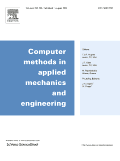
COMPUTER METHODS IN APPLIED MECHANICS AND ENGINEERING
Scope & Guideline
Pioneering Research in Applied Mechanics and Engineering.
Introduction
Aims and Scopes
- Computational Mechanics:
The journal covers computational methods for analyzing mechanical systems, including finite element methods (FEM), finite volume methods (FVM), and meshfree methods, with applications in structural, fluid, and thermal analysis. - Multiscale Modeling:
Research on multiscale methodologies that link different scales of analysis, from microscale material behavior to macroscale structural performance, is a core area, often integrating techniques such as homogenization and multiscale finite element methods. - Topology Optimization:
The journal publishes studies on topology optimization techniques tailored for various engineering applications, focusing on material distribution and structural design to enhance performance and reduce weight. - Data-Driven Approaches:
A growing focus on data-driven methodologies, including machine learning and artificial intelligence, for enhancing computational models and predicting material behavior based on experimental data. - Fluid-Structure Interaction:
Research on the interaction between fluids and solid structures, particularly in dynamic and complex environments, is emphasized, including methods to model such interactions accurately. - Advanced Material Modeling:
Studies that explore the behavior of advanced materials, including composites and smart materials, under various loading conditions and environmental factors, often using phase field models and peridynamics.
Trending and Emerging
- Machine Learning in Engineering Applications:
There is a significant increase in publications that integrate machine learning techniques with traditional computational methods, particularly for predictive modeling, optimization, and data assimilation in engineering problems. - Phase-Field Modeling:
Phase-field methods are becoming increasingly popular for modeling complex phenomena such as crack propagation, phase transitions, and material degradation, indicating a shift towards more sophisticated techniques. - Multiscale and Hybrid Methods:
Research focusing on multiscale modeling and hybrid methods that combine different computational techniques (e.g., coupling finite element methods with peridynamics) is rising, reflecting the need for comprehensive approaches to complex problems. - Topology Optimization with Advanced Constraints:
There is a growing trend towards incorporating advanced constraints and considerations, such as manufacturability and performance under uncertainty, into topology optimization studies. - Fluid-Structure Interaction with Real-Time Simulations:
The demand for real-time simulations of fluid-structure interactions is increasing, driven by advancements in computational power and the need for rapid analysis in engineering applications.
Declining or Waning
- Traditional Structural Analysis:
There has been a noticeable reduction in papers focusing solely on conventional structural analysis methods, as more researchers embrace advanced computational techniques and hybrid methodologies. - Basic Finite Element Theory:
Papers that concentrate on basic finite element theory without innovative applications or enhancements are becoming less common, reflecting a trend towards more complex and integrated approaches. - Classical Fluid Dynamics:
Research purely focused on classical fluid dynamics without the incorporation of computational advancements or modern methodologies is declining, as the field evolves towards more interdisciplinary approaches. - Simplistic Material Models:
The use of simplistic material models in publications has decreased, with more emphasis being placed on complex modeling approaches that consider material heterogeneity and nonlinearity.
Similar Journals

MECCANICA
Pioneering Insights in Engineering and MaterialsMECCANICA, an esteemed journal published by Springer, stands at the forefront of research in the fields of Condensed Matter Physics, Mechanical Engineering, and Mechanics of Materials. Established in 1966 and continuing through 2024, this journal provides a robust platform for the dissemination of innovative research and advancements in these increasingly interconnected domains. With an impressive 2023 ranking placing it in the Q2 category across multiple fields, MECCANICA boasts a Scopus rank of #198 in Mechanical Engineering, #150 in Condensed Matter Physics, and #141 in Mechanics of Materials, highlighting its significance and influence within the scholarly community. The journal aims to foster dialogue among researchers, professionals, and students, facilitating the exchange of cutting-edge ideas and methodologies crucial for overcoming contemporary engineering and physics challenges. Readers can access a wealth of knowledge through its comprehensive articles, and while it does not currently offer open access, the journal remains instrumental in shaping the future of engineering and physical sciences.

Journal of Computational Applied Mechanics
Catalyzing Knowledge Sharing in Computational MechanicsJournal of Computational Applied Mechanics, published by UNIV TEHRAN, DANISHGAH-I TIHRAN, is an influential open-access journal that has been disseminating significant research findings since its inception in 2012. With a dedicated focus on the fields of Computational Mechanics, Mechanical Engineering, and Mechanics of Materials, this journal has garnered a Q3 ranking in multiple relevant categories as of 2023, indicating its burgeoning impact within the academic community. Although precise HIndex scores are currently unavailable, the journal's recognition is underscored by its Scopus rankings, placing it in the middle tier among its peers. The journal invites researchers, professionals, and students to contribute to and engage with the continually evolving discourse in applied mechanics, fostering innovation through the dissemination of quality research. As an open-access journal, it ensures that findings are readily accessible to a global audience, thereby enhancing collaboration and knowledge sharing in the scientific community.

Advanced Steel Construction
Shaping the Landscape of Modern EngineeringAdvanced Steel Construction is a prominent journal published by the Hong Kong Institute of Steel Construction, dedicated to the field of structural engineering and material sciences with a specific focus on steel construction techniques and advancements. Since its inception in 2005, the journal has established itself as a valuable resource for researchers, professionals, and students alike, offering insights into the latest developments and innovative practices within the realms of building construction, civil engineering, and materials mechanics. With its recognition as a Q2 journal across multiple engineering categories, including Building and Construction, Civil and Structural Engineering, Mechanical Engineering, and Mechanics of Materials, it ranks competitively in Scopus rankings, highlighting its significance in academic discourse. The journal is based in China, at the Hong Kong Polytechnic University, and provides an essential platform for sharing groundbreaking research and fostering collaboration within the engineering community.
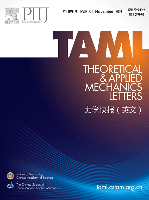
Theoretical and Applied Mechanics Letters
Exploring Cutting-Edge Solutions in Engineering DisciplinesTheoretical and Applied Mechanics Letters, published by ELSEVIER, stands as a premier journal in the field of engineering and applied mechanics, recognized for its rigorous peer-reviewed articles that advance theoretical and practical frameworks. With an impressive open access policy established in 2015, the journal enhances global accessibility to cutting-edge research across a range of disciplines including Aerospace, Civil, Mechanical, and Biomedical Engineering, along with Computational Mechanics and Ocean Engineering. The journal boasts an enviable position in the academic landscape, achieving a Q1 rank in several categories as of 2023, while being cited among the top percentiles in Scopus Ranks, specifically ranking #25 in Aerospace Engineering and #15 in Computational Mechanics. The journal aims to foster innovation by providing a platform for scholars and professionals to disseminate their findings, thereby bridging the gap between theoretical research and practical applications. By promoting a diverse range of topics and methodologies, Theoretical and Applied Mechanics Letters not only contributes to the advancement of engineering disciplines but also supports the global academic community in exploring sustainable and impactful engineering solutions.

COMPUTATIONAL MECHANICS
Fostering Collaboration in the World of MechanicsCOMPUTATIONAL MECHANICS, published by SPRINGER, is a premier international journal that focuses on the intersection of applied mathematics, engineering, and computational methods. With a commendable Q1 ranking in multiple categories, including Applied Mathematics and Mechanical Engineering, this journal is pivotal for disseminating groundbreaking research and innovative methodologies that advance the field. The journal has steadily contributed to the academic community since its inception in 1986 and continues to lead discussions and practices in computational mechanics and related disciplines. With a robust impact reflected in its Scopus rankings—placing it within the top percentiles across various categories—COMPUTATIONAL MECHANICS serves as a crucial platform for researchers, professionals, and students seeking to explore and contribute to significant advancements in computational theory and mathematical applications. Although it does not currently operate under an open access model, the journal ensures wide accessibility through libraries and institutional subscriptions, fostering a rich exchange of knowledge in the global scientific community.
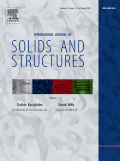
INTERNATIONAL JOURNAL OF SOLIDS AND STRUCTURES
Innovating the Future of Structural EngineeringINTERNATIONAL JOURNAL OF SOLIDS AND STRUCTURES, published by PERGAMON-ELSEVIER SCIENCE LTD, is a leading academic journal with a strong reputation in the fields of engineering and applied mathematics. Established in 1965 and converging its impact on research through 2024, this journal is highly regarded within Q1 quartile rankings across multiple disciplines, including Applied Mathematics, Condensed Matter Physics, and Mechanical Engineering. With its ISSN 0020-7683 and E-ISSN 1879-2146, the journal is systematically indexed and accessible to a global audience, although it does not currently offer open access options. Researchers, professionals, and students alike benefit from its high-impact research articles, as evidenced by its impressive Scopus rankings in various categories, including a 91st percentile in Applied Mathematics and 81st in Mechanical Engineering. The journal serves as a critical platform for the dissemination of groundbreaking findings in solid and structural mechanics, promoting innovation and collaboration within the scientific community.
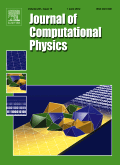
JOURNAL OF COMPUTATIONAL PHYSICS
Charting the Course for Future Discoveries in PhysicsJOURNAL OF COMPUTATIONAL PHYSICS, an esteemed publication from ACADEMIC PRESS INC ELSEVIER SCIENCE, serves as a premier platform in the field of computational physics and its interdisciplinary applications. Since its inception in 1966, the journal has provided invaluable insights and significant advancements in areas such as applied mathematics, numerical analysis, and modeling and simulation. With a robust impact factor and ranking in the top quartile across various related categories, including Q1 in Applied Mathematics and Physics and Astronomy, it is essential reading for researchers and professionals aiming to stay at the forefront of computational techniques and methodologies. Although the journal is not open access, it remains highly regarded with a reputation for rigorous peer review and high-quality publications. As the field continues to evolve, the JOURNAL OF COMPUTATIONAL PHYSICS highlights innovative research that not only advances theoretical constructs but also offers practical applications in scientific and engineering domains. For scholars and students, this journal embodies a critical resource for deepening their understanding and fostering dialogue within the scientific community.

STRENGTH OF MATERIALS
Bridging theory and practice in material mechanics.STRENGTH OF MATERIALS is a prestigious journal published by SPRINGER that focuses on the critical field of mechanics of materials, providing an authoritative platform for the dissemination of research and developments in material strength analysis since 1969. With an ISSN of 0039-2316 and an E-ISSN of 1573-9325, this journal serves a global audience of researchers, professionals, and students, contributing essential insights into the physical properties and performance characteristics of various materials under stress and strain. As part of the United States' academic literature, it showcases work that not only advances theoretical knowledge but also applies to practical engineering scenarios. Although ranked in the Q4 tier with respect to its category in Mechanics of Materials, with a Scopus rank of #319 out of 398 (19th percentile), it remains an important resource for those looking to expand their understanding in this specialized area. Researchers can access a wealth of information through this journal, fostering continued innovation and interdisciplinary collaboration.

Computational Particle Mechanics
Pioneering Research in Fluid Dynamics and Structural EngineeringComputational Particle Mechanics, published by SPRINGER INTERNATIONAL PUBLISHING AG, is a leading journal dedicated to advancing knowledge in the interdisciplinary fields of computational mechanics, civil engineering, and fluid dynamics. With an impressive impact factor reflecting its high-quality research publications, this journal maintains a strong presence in the academic community with a Q1 ranking in categories such as Civil and Structural Engineering, Computational Mechanics, and Numerical Analysis as per the latest 2023 evaluations. Researchers and professionals benefit from the journal's commitment to open-access options, promoting wider dissemination of groundbreaking studies. Operating under the Swiss publishing house since 2014, Computational Particle Mechanics aims to foster innovation through the exploration of particle-based methods and simulations, making significant contributions to methodologies within computational mathematics and modeling. As the journal continues to evolve until its converged years end in 2024, it stands as a vital resource for those looking to enhance their expertise in dynamic modeling and simulation techniques.
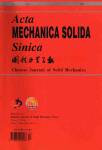
ACTA MECHANICA SOLIDA SINICA
Advancing the Frontiers of Solid MechanicsACTA MECHANICA SOLIDA SINICA is a prestigious journal published by Springer, dedicated to advancing research in the fields of Computational Mechanics, Mechanical Engineering, and Mechanics of Materials. Since its inception in 1981, the journal has established a significant presence in the academic community, holding a commendable Q2 ranking across its categories as of 2023. Furthermore, it is recognized for its impactful contributions, with Scopus rankings placing it in the top quartiles, fostering essential discourse among professionals and researchers in the engineering domain. While it operates under a traditional access model, ACTA MECHANICA SOLIDA SINICA continues to provide valuable insights and developments, making it an essential resource for those seeking to deepen their understanding of solid mechanics and related disciplines. The journal remains an influential platform for innovative theoretical and experimental studies, reinforcing its status in the global academic landscape.